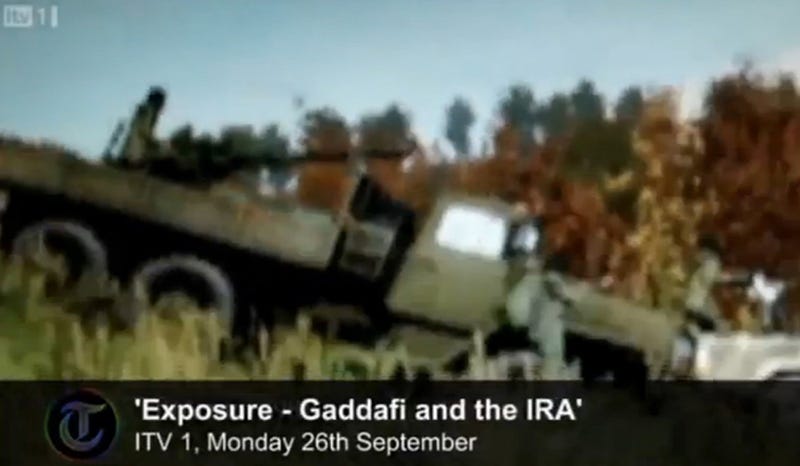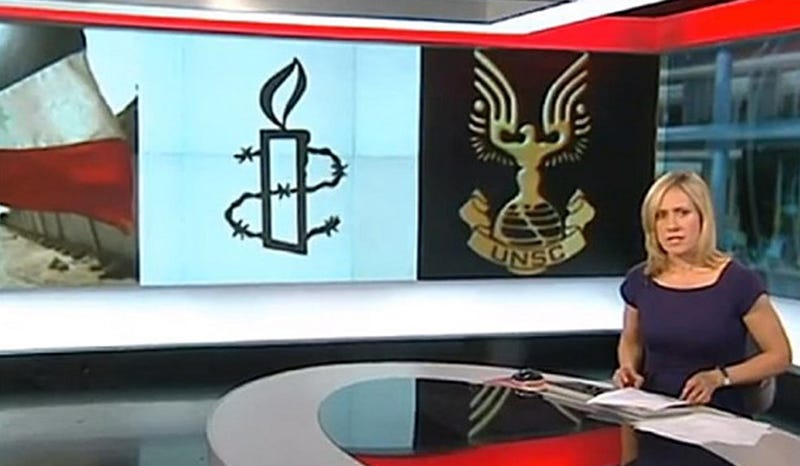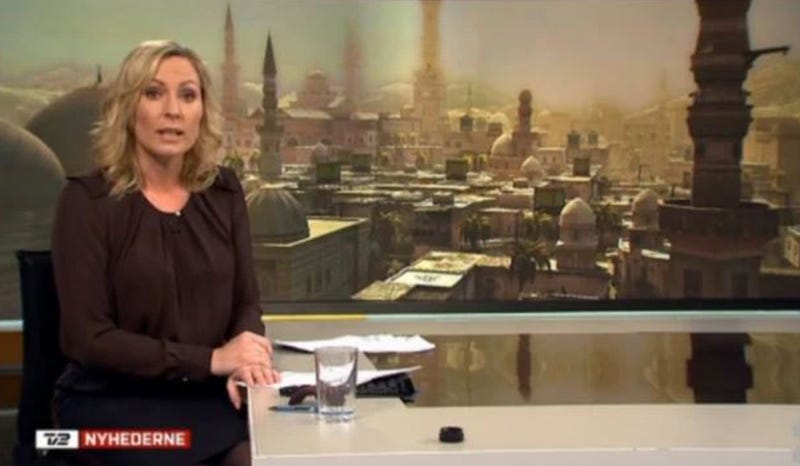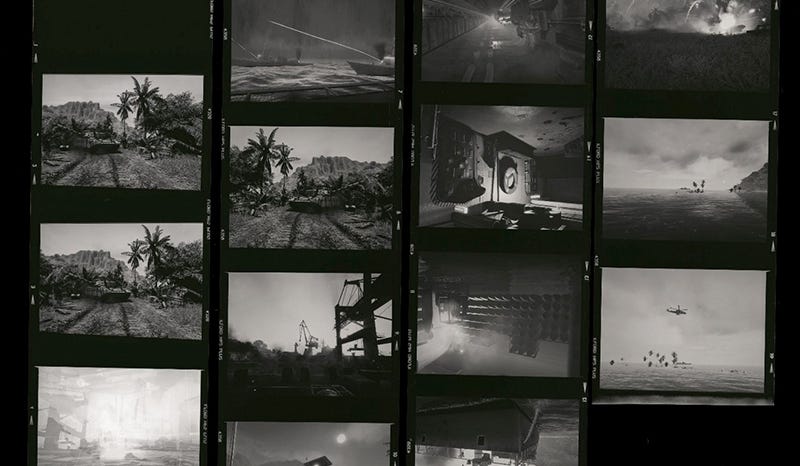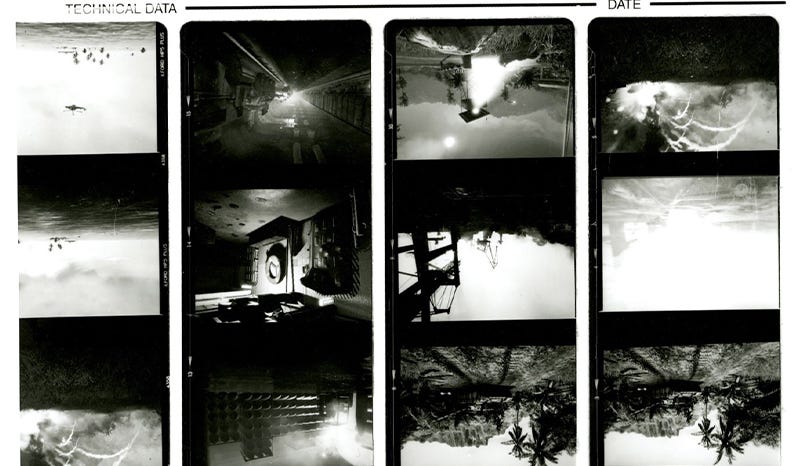If you haven’t yet read my previous post on my photographic adventures within the virtual world, feel free to pop back after you’ve caught up - we may resume afterwards.
In the last post, we looked at the initial stages of my second project within the virtual and the ethical consideration that are associated with war photography. I also began gathering images and research. The latter continued from there and after looking at several articles and books, I wanted to look at examples of videogames within the media. For this part of the project, the goal that I formulated for myself through my initial thoughts and experimentation was to create believable works within the genre of war photography. In doing this, and through the images I wanted to create, I was hopeful that I could highlight how visually mixed the notions of war are, both as a horrendous blight on humanity, and a source of entertainment for children. I mentioned that I wanted to look at videogames in media, and it has a very large part to play in the confusion around the subject. Several publications have mistakenly used footage or stills from videogames as part of their reporting and it was quite chilling to realise that the kinds of images they drew upon, either by mistake, or part of a particular agenda they were hoping to push, were exactly the kinds of images I was looking to create. In 2011, ITV produced a documentary using footage from a military simulation game developed by Bohemia Interactive, ARMA 2. Within the documentary they presented the in-game footage as real, supposedly recorded by IRA forces in 1988. The footage supposedly showed members of the Irish Republican Army, using weapons supplied by Muammar Gaddafi, shooting down a helicopter. According to ITV, the in-game footage was mistakenly used in place of the original through human-error but stands to show that the real and the virtual are close, if this mistake was even possible.
Another example of this kind of error was perpetrated by the BBC in a report on the United Nations Security Council. During the broadcast, the screen behind the reporter displayed two insignias – on the left was that of Amnesty International, on the right that of the UNSC. However, the UNSC logo wasn’t associated with the United Nations we know of in our reality, rather it was that of the United Nations Space Command – the military, exploratory, training, and scientific agency of the United Earth Government. What is the United Earth Government you might ask? Well, that is the government administration of Earth within the Halo series of videogames. This mistake was quickly spotted by viewers and was rectified, however it brings to light the trust we have in the news, and whether it is at all justified. The mistake appears rather innocent in this instance, but could easily be interpreted as a lack of respect for the subject matter and under different circumstances, with a more sensitive subject, such errors could prove troublesome.
Yet another example of this was broadcast on a Danish news channel TV2 in a report of theirs on the Syrian civil war in 2013. Within the report, an image of the city of Damascus was used to illustrate the story. However, the image they used was a virtual recreation of the city set some 700 years ago, and the image itself was taken from the 2007 videogame Assassins Creed. Again, this mistake was rather innocent, or perhaps it was just laziness on the part of the researchers, but either way, it shows how careful we must be when consuming news reports. We expect that the reports are verified in their making, but the burden of research and of verifying sources falls on the viewer more and more these days. These mistakes are generally just that, mistakes, but as video games become more realistic and war becomes, as Cumming said, like a game, the confusion as to what is real and what is fictional will only become more prevalent, and with the emergence and ease of access to generative technologies, the use of artificial intelligences, as well deep fakes, one wonders if the truth will be discernible at all in the coming years.
Given these examples, it’s fair to assume that there have been other such occurrences and knowing that videogames can be mistaken as real sources of conflict imagery, it gave me some confidence in my ability to create a realistic set of images based on a virtual war. Following on from my previous experiments with 35mm film, I decided to try capturing a new set of photographs, this time using a roll of 120 black and white film – thinking that perhaps a selection of medium format images might suit the project better, and allow me more freedom in the final presentation. After going through the process of setting up my screen and camera again, I took the images, developed the film, and got to work creating a contact sheet and a series of 10x8 prints. In crating these, I included the border of the film to further bring the images into reality, feeling that proving the photographs were taken on film would add a layer of reality over the images, further obscuring their origins, much like that of the FP-100c images I took in the previous project.
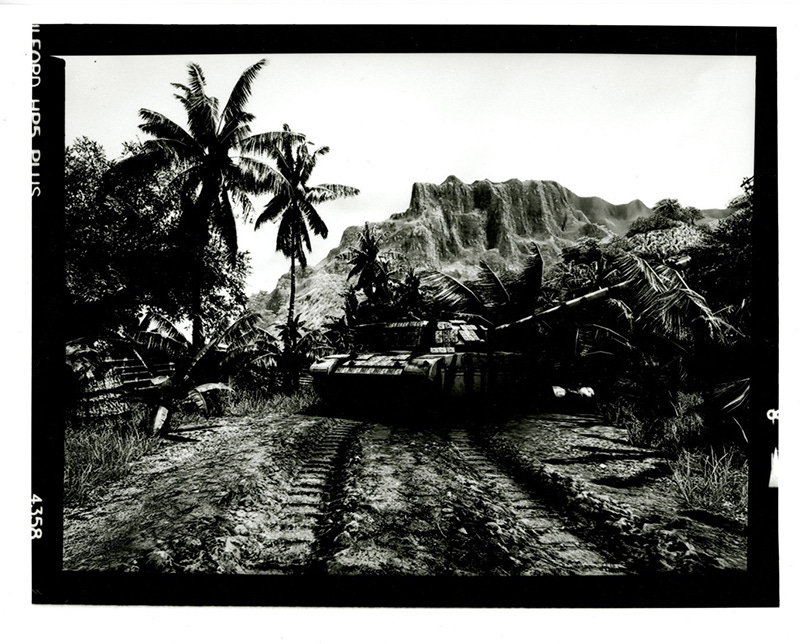
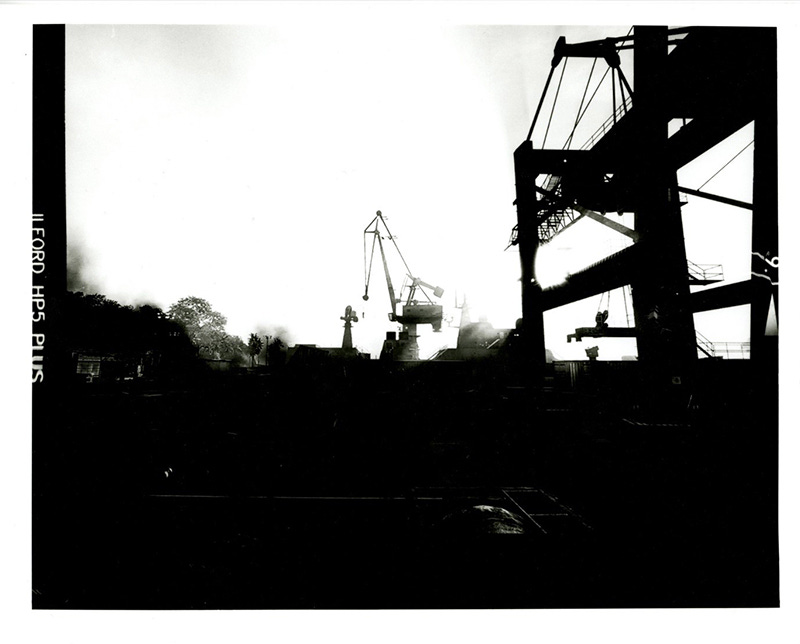
BBC News, Halo and the slight image search error (2012) The Guardian. Available at: https://www.theguardian.com/technology/gamesblog/2012/may/28/bbc-halo-image-news (Accessed: 21 May 2023).
UK, H.P. (2013) Danish TV uses Assassin’s Creed Screenshot to illustrate Syrian crisis, HuffPost UK. Available at: https://www.huffingtonpost.co.uk/2013/03/11/danish-tv-uses-assassins-creed-syria_n_2852558.html (Accessed: 21 May 2023).
‘ira’ footage was from video game, admits ITV (2011) The Guardian. Available at: https://www.theguardian.com/media/2011/sep/27/ira-footage-video-game-itv (Accessed: 21 May 2023).
These images were getting closer to what I was aiming for… at least in some aspects, but there was still more work to be done. We’ll look at where I took the project after this in a subsequent post. Lots more to come, but in the mean time, feel free to look back on some earlier posts!
And as always, thank you for reading. If you’d like to support the blog, you can do so over on Patreon, or by subscribing and sharing!




